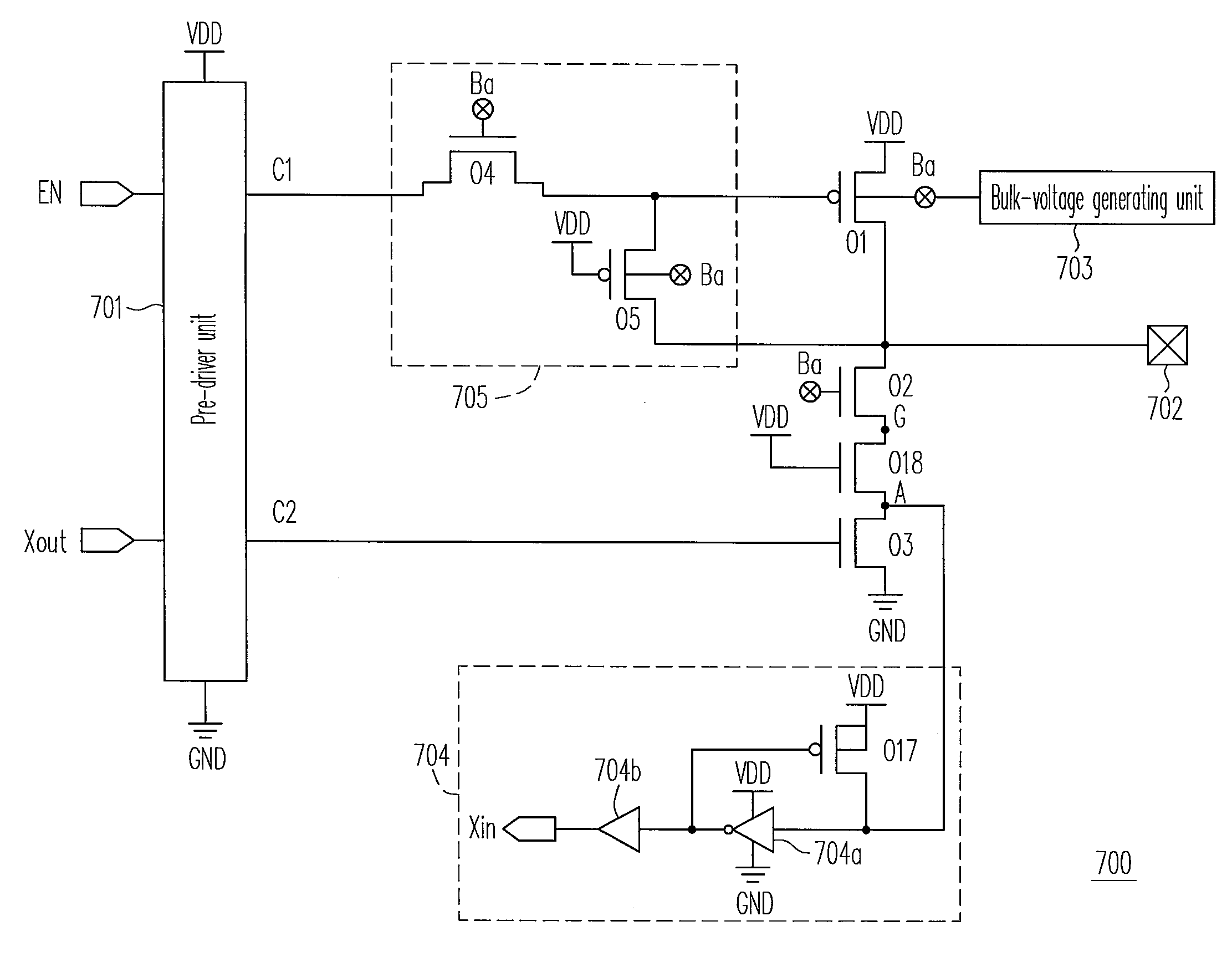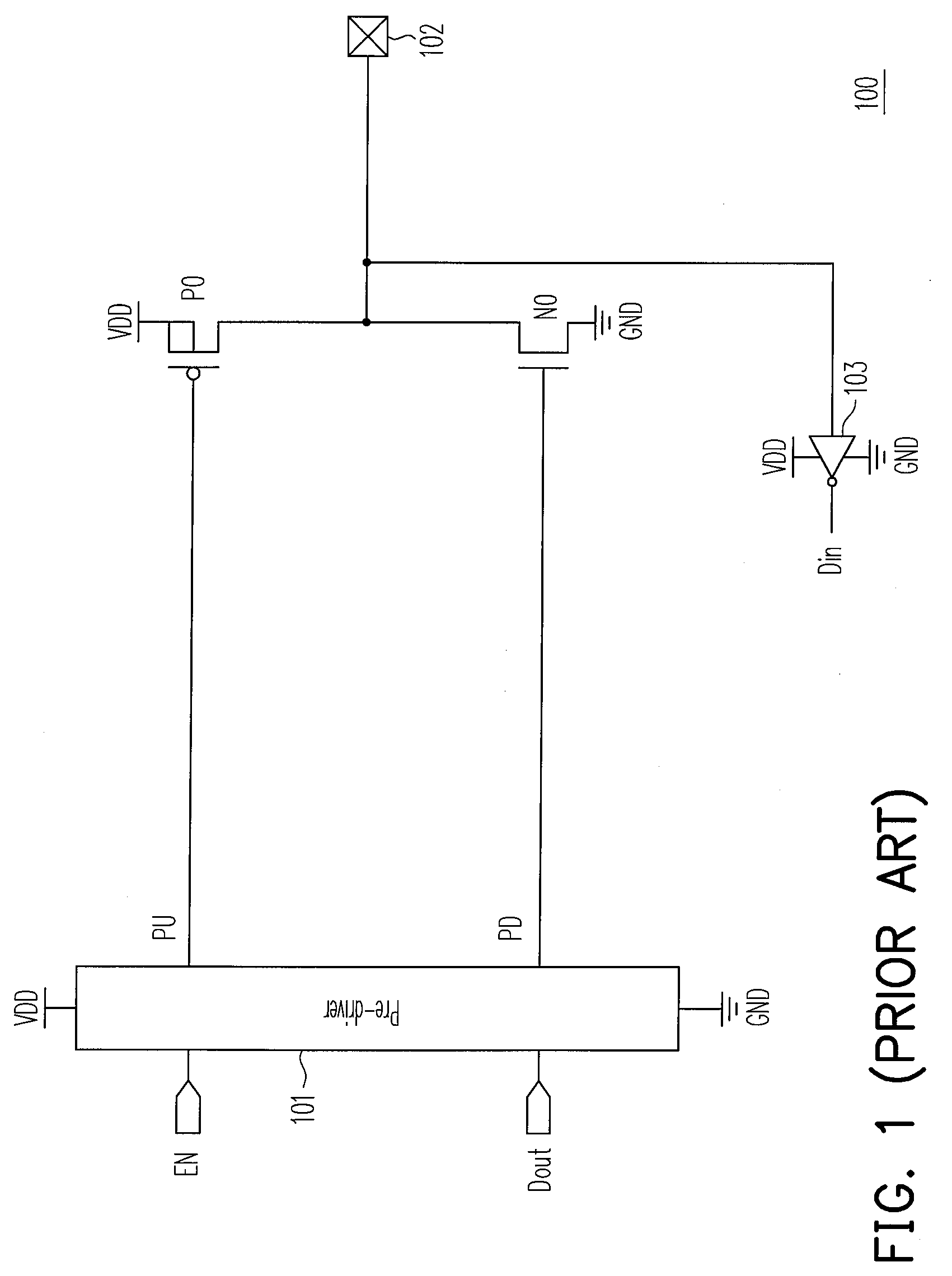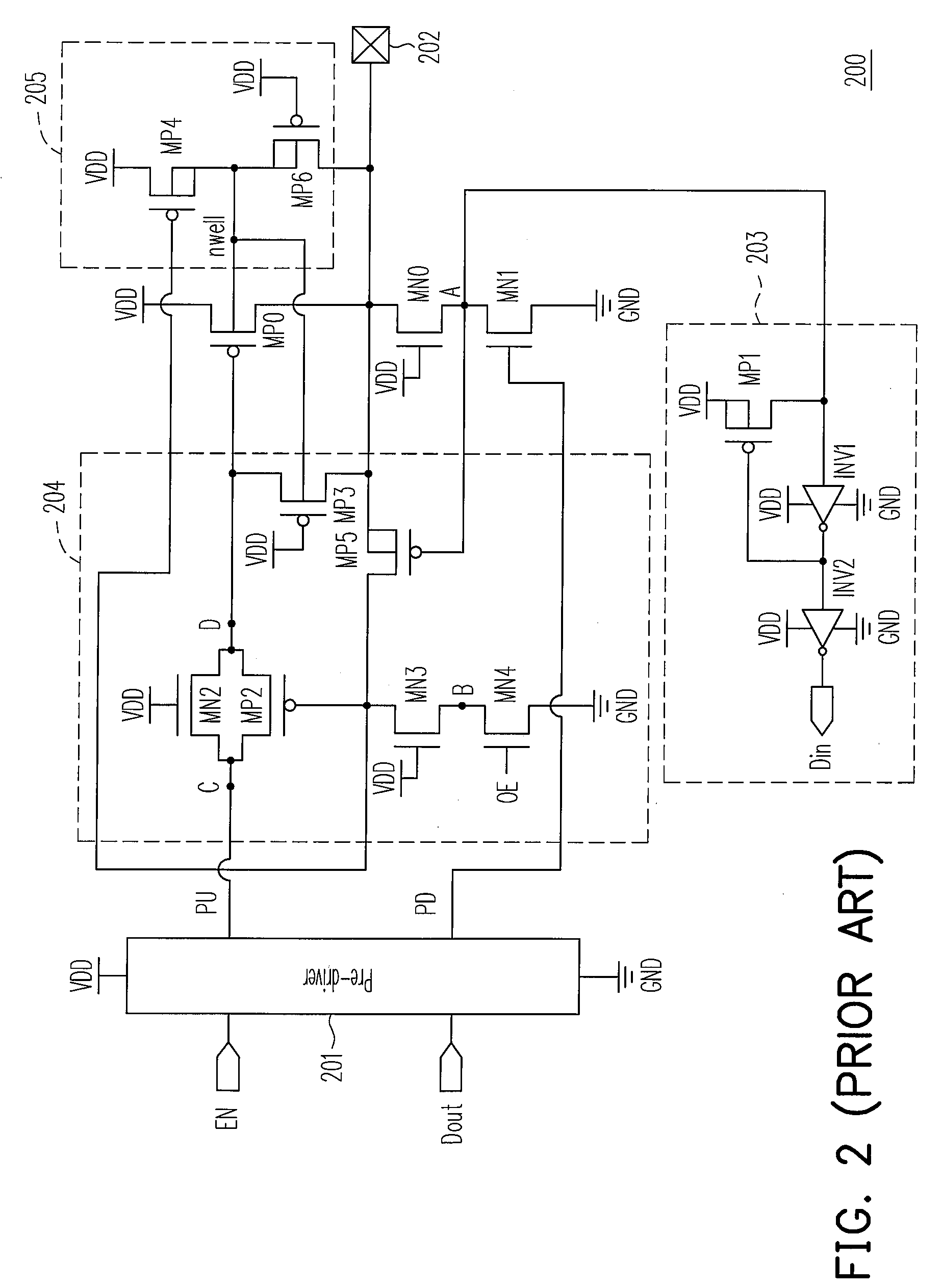Mixed-voltage I/O buffer to limit hot-carrier degradation
a buffer and mixed voltage technology, applied in the field of input and output buffers, can solve the problems of unwanted leakage current paths, increased hot-carrier degradation, and lowered gate-oxide reliability, and achieve the effect of increasing the gate-oxide reliability of its internal transistors and high/low voltage tolerance characteristics
- Summary
- Abstract
- Description
- Claims
- Application Information
AI Technical Summary
Benefits of technology
Problems solved by technology
Method used
Image
Examples
Embodiment Construction
[0039]Reference will now be made in detail to the present preferred embodiments of the invention, examples of which are illustrated in the accompanying drawings. Wherever possible, the same reference numbers are used in the drawings and the description to refer to the same or like parts.
[0040]FIG. 4 is a diagram of an Mixed-voltage input and output buffer according to an embodiment of the present invention. As shown in FIG. 4, the Mixed-voltage input and output (I / O) buffer 400 includes a pre-driver unit 401, a bulk-voltage generating unit 403, an input stage unit 404 and transistors M1˜M3. The transistor M1 is a P-type transistor and the transistors M2˜M3 are N-type transistors. The pre-driver unit 401 outputs a first signal C1 and a second signal C2. The bulk-voltage generating unit 403 determines whether a first voltage (a system voltage VDD) or a pad voltage is connected to the output to be used as a bulk voltage Ba according to the voltage level of the pad 402.
[0041]A gate of t...
PUM
 Login to View More
Login to View More Abstract
Description
Claims
Application Information
 Login to View More
Login to View More - R&D
- Intellectual Property
- Life Sciences
- Materials
- Tech Scout
- Unparalleled Data Quality
- Higher Quality Content
- 60% Fewer Hallucinations
Browse by: Latest US Patents, China's latest patents, Technical Efficacy Thesaurus, Application Domain, Technology Topic, Popular Technical Reports.
© 2025 PatSnap. All rights reserved.Legal|Privacy policy|Modern Slavery Act Transparency Statement|Sitemap|About US| Contact US: help@patsnap.com



